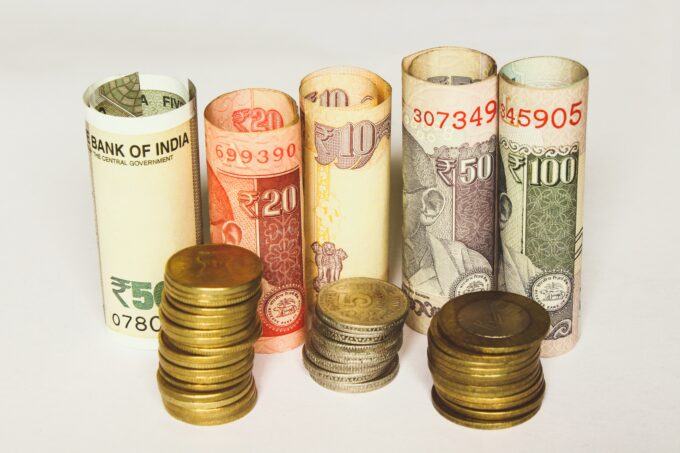
The Washington Consensus
The debt of developing countries is at “crisis” levels, the World Bank has just said. Supporting that view is a New York Times story December 16 headlined “The Debt Problem is Enormous, and the System for Fixing It is Broken.”
The article goes on to explain: “The foundational ideology — later known as the ‘Washington Consensus’ — held that prosperity depended on unhindered trade, deregulation and the primacy of private investment. Nearly 80 years later, the global financial architecture is outdated, dysfunctional and unjust.”
Indeed, the world is awash in government debt, led by the US, Japan, and China, which together account for about half the total. But great powers have many options for handling indebtedness. Small, economically weak countries do not.
What the Times account hints at, but never directly confronts, is the concentrated power of the Washington Consensus. It reflects American and European economic predominance—not just a consensus of the World Bank and International Monetary Fund (IMF) leaderships, in which the US has always had sole veto power, but also the US Treasury Dept. and the global network of financial centers that stretches from New York and Chicago to Frankfurt and Zurich.
Predominance means the ability to dictate terms of loans. Over many years, World Bank and IMF decisions have aimed to condition loans to poor and middle-income countries on their openness to private investment, free trade, and deregulation of state-run agencies—roads, railways, banks, key industries.
Openness translates to opportunities for Western capital to penetrate developing-world economies, often resulting in the hollowing out if not elimination of local private and state-owned business.
Large borrowers must also deal with high interest rates. To ensure repayment, the World Bank and IMF preach austerity: Governments should slash social welfare programs to pay down the debt. Any family deeply in debt would understand the terrible choice facing governments here: Stay on good terms with the bankers by eliminating or reducing subsidies to the poor on food, health care, and fuel.
Consequently, António Guterres, secretary general of the United Nations, says in the Times article: “Even the most fundamental goals on hunger and poverty have gone into reverse after decades of progress.”
A Human Development Crisis
The global debt crisis is really not a new problem, just one that is surging again. As the Times explains: “Pounded by the Covid-19 pandemic, spiking food and energy prices related to the war in Ukraine, and higher interest rates, low- and middle-income countries are swimming in debt and facing slow growth.”
But the Times leaves out the China factor—the billions of dollars in loans to poor countries that cannot possibly be repaid. Sub-Saharan Africa, with about $140 billion in loans, stands out here: Of the top 15 countries that have received China’s loans, only one (Bolivia) is outside that region.
China proclaims that its loans, mainly under the Belt and Road Initiative, come without demands for austerity and with lower interest rates. The BRI has been well received in a number of countries.
But there is no free lunch here and—to mix metaphors—strings are attached, hence the “debt trap.” Recipients of Chinese loans may have to pay back with access to ports and rail lines, extraction of mineral and other resources, use of Chinese labor, damage to the environment, and adherence to Chinese policy views on (for example) human rights and Taiwan.
The debt crisis is one symptom of a development crisis, in which far too many countries do not have the financial resources to support decent conditions of living, from health and food security to environmental protection. Moreover, these countries often are the victims of rich countries’ behavior, as in the case of climate change.
As one source points out, the richest one percent of the world’s population, representing 80 million people, account for about half of global carbon emissions, while the poorest 50 percent, with 3.9 billion people, account for about eight percent of carbon emissions.
Top Down or Bottom Up Models?
For as long as I can remember, the typical solution to the debt problem has been to give developing countries seats at the table where decisions are made, and to convert loans into grants. A seat at the table might help if the major players, starting with the US, were ever persuaded to reduce their voting power.
Even then, it is the loan conditions—the amount of money available, the high interest rates, requirements of local regulations, and terms of repayment—that would still depend on the good graces of the major financial institutions. And those institutions, to put it mildly, don’t believe in being charitable.
As for providing grants rather than loans, well, that day is long gone and would be very difficult in today’s competitive environment to recover. Foreign aid from nearly all countries, particularly in the form of direct grants, has been on the downslide for many years.
The Times report is weakest in failing to report on bottom-up approaches to development in the human interest. Giving aid or loan relief means dealing exclusively with governments that may be corrupt, excessively bureaucratic and incompetent, dominated by the military, and authoritarian—in any of these cases, giving low priority to human security.
Channeling funds to NGOs with successful experiences promoting human development is far more likely to help than providing unworthy governments with debt relief. There are plenty of grassroots development programs that work—for example, in microfinance.
Kiva is one: It provides small loans at very low interest to villagers, usually women, who are eager to start small businesses. The real choice for international financial organizations comes down to this: Do you want to bail out governments or empower people?
The post Global Debt Is Beyond Control appeared first on CounterPunch.org.
This post was originally published on CounterPunch.org.

